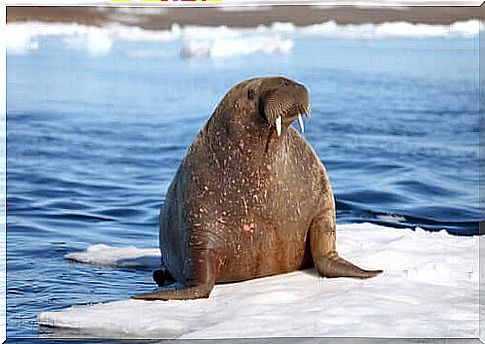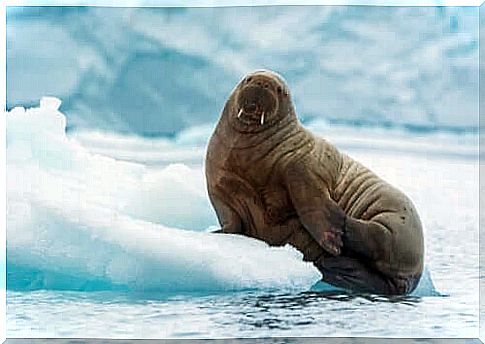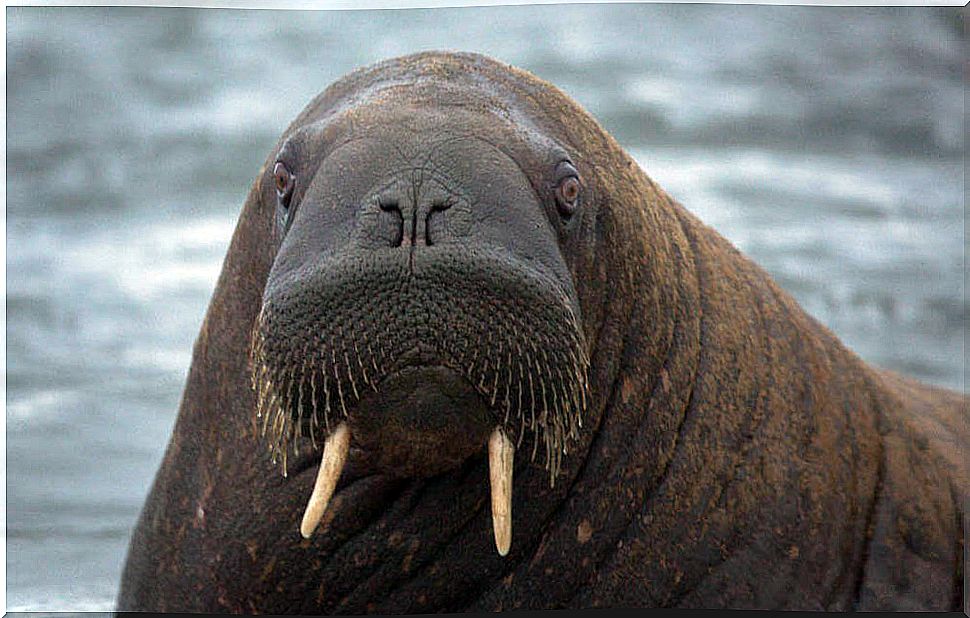Walrus Subspecies: Habitat And Characteristics

There are three subspecies of walrus: the Atlantic, Pacific, and Laptev Sea walrus. They differ from each other in the size they reach in their adult state and in the place where they live.
Recent studies with mitochondrial DNA, however, have revealed that only the first two should be accepted, namely the Atlantic walrus and the western Pacific walrus.
Walruses are marine mammals belonging to the superfamily of pinnipeds, whose members all have extremities transformed into fins and a fusiform body, that is, in the shape of a spindle.
Within their group, they are the only animals to have long tusks, both males and females. These help them move in the ice, but also act as weapons in case of aggression with other species or to defend themselves from some predators, such as polar bears and killer whales.
Pacific walrus ( Odobenus rosmarus divergens )
This walrus subspecies has a discontinuous arctic and subarctic distribution. We find these animals from the Baring and Chukchi Seas to the Beaufort Sea and the Laptev Sea, also populated by another subspecies.

Usually these animals remain in the continental shelf and rarely enter deep waters. Pacific walruses swim from one ice sheet to another to nearby islands, where they can rest in the sun.
Of the three subspecies presented, they are the largest. Males reach around 3.6 meters in length and weigh between 880 and 1656 kilograms. Females are somewhat smaller, reach three meters and weigh between 400 and 1250 kilograms.
Newborn puppies measure nearly half of their mothers and can weigh between 45 and 77 kilograms. These features allow them to perfectly cope with the cold.
The Atlantic walrus ( Odobenus rosmarus rosmarus )
The Atlantic walrus inhabits the coasts of Canada to the Kara Sea in northern Siberia. In the past, it was possible to see this subspecies also in the north-west of the North Atlantic, south of the Gulf of San Lorenzo; due to massive hunting, however, the population became extinct.

In its adult state, the Atlantic walrus is slightly smaller and lighter than the Pacific walrus. Infants have the same measurements, but the lower weight limit is around 33 kilograms.
Their state of conservation is also unknown. On the other hand, the rapid thaw that is affecting the areas where these walruses live is evident. Ice, as we know, is the ecosystem of these animals, without which they cannot live.
The Laptev Sea walrus subspecies ( Odobenus rosmarus laptevi )
This walrus subspecies lives only in the Laptev Sea on the east coast of Siberia, hence its name. Although it appears to have distinct ecological parameters from the Pacific walrus, mitochondrial and morphological studies indicate that it is not a distinct subspecies.

The size of the body and tusks is not significantly different from that of the Pacific walrus. In light of this, according to researchers at the Natural History Museum in Oslo, it is incorrect to declare it a different subspecies just because it lives in a certain area.
Although little information is available on walruses, accelerating climate change is known to put this species at serious risk. Despite this, the walrus has not stopped being hunted by humans to obtain the ivory of its tusks.









